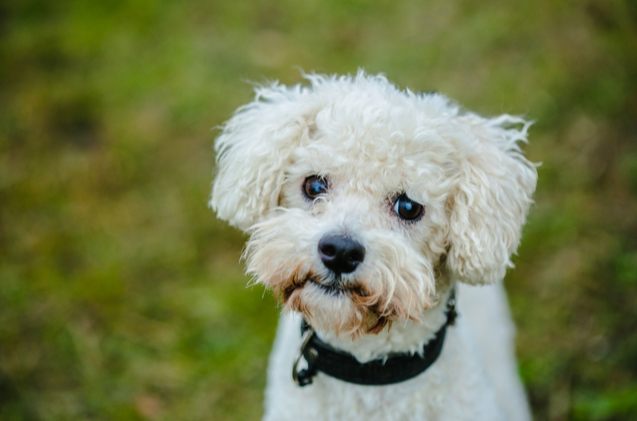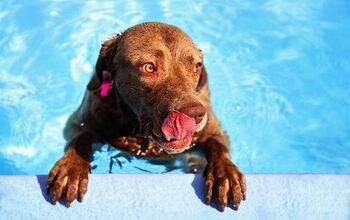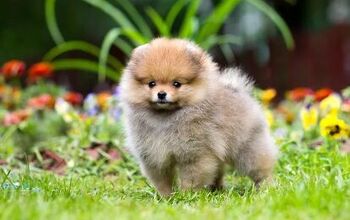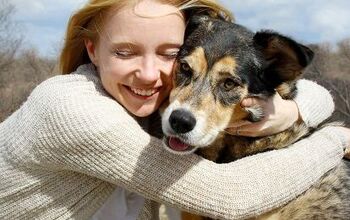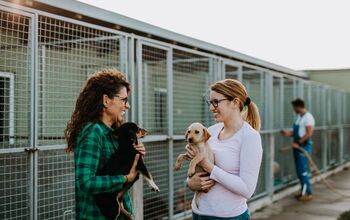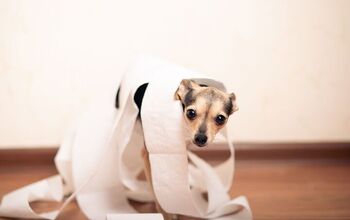Top 10 Confident Dog Breeds

It’s not the bold and sassy nature that some of the smaller dog breeds exhibit (is it me or are we both thinking Chihuahua?). It’s also not the take-no-prisoners approach shown by many of the larger guard-dog breeds. Nor is it the ready-and-willing nature of the high-strung watchdog who is quick to respond with all his fury to the looming danger of the postman.
In short, it has nothing to do with his certainty that he can win whatever battle he chooses. It’s all about being comfortable in his own skin and knowing when its time to step up to the plate and when its cool to just stand back and observe. A confident dog has a good, rational head on his shoulders, he doesn’t feel intimidated easily and he isn’t overly reactive in non-threatening situations.
As any animal lover knows, some of these traits are up to nature while others are down to nurture. There’s no question that even the most confident dog breed can be made anxious and aggressive if he hasn’t been properly socialized, has been mistreated or poorly trained.
So, let’s take a look at the dog breeds who are instinctively more confident in nature. And then let’s go through a few tips on how you can build confidence in your dog regardless of his make-up.
This pooch is simply calm, cool and collected at all times. As a hunting dog that has been bred to take direction and retrieve downed water foul, this gentle boy is about as placid as they come. That’s not to say he won’t spring into action the moment the command is given, just that he’s not going to yap impatiently or become easily distracted when he’s on the job. Ditto when he’s settled in at home and is happy to be “off duty” – unless of course, those raccoons start sifting through the garbage cans again. (photo credit: Parilov/shutterstock.com)
Definitely the strong and silent type, the Mastiff is a big, hardworking pooch with a gentle, confident disposition. While his appearance alone – oversized head and heavily muscled body – can appear imposing, this patient and loving dog is actually quite in tune with his pack leader. Mastiffs are people pleasers and while they are a fairly quick study, they do become bored and need to be re-engaged in training sessions from time to time. He’s a non-aggressive protector of his pack and while he is cautious around strangers, he is more likely to growl than ever act out. (photo credit: f8grapher/shutterstock.com)
Now high-energy doesn’t necessarily mean you have an out of control, reactive type of dog. For anyone that has met a Jack Russell, you’ll know that for this breed, confidence and persistence come crashing together. Yes, with this little scent tracking machine the nose knows and he’s loathed to let go of any new smell until he’s sourced its origin – and he has all the confidence that he will. Note to pet parents: because he can get swept up in this job of search and recovery, it doesn’t hurt to monitor him closely whenever he’s off-leash. (photo credit: Victoria Antonova/shutterstock.com)
Not all small dogs are easily excitable. In fact, the lightweight Bolognese is anything but. Described by the American Kennel Club – the holy grail of all-things-dog – as calm and easy-going, this stocky little boy is also fun-loving and super loyal to his human peeps. As his name implies, his roots go back to Italy where he was understandably considered a revered pet by ancient Romans. Fast forward and you have an affectionate curious and tenacious little companion who loves to be the center of attention at every opportunity. (photo credit: Lioneska/shutterstock.com)
I’ve yet to meet a Golden that is anything but chill. This totally unflappable breed exudes calm confidence and is happy to go with the flow wherever that may lead. Particularly when his human pack is with him. Of course, anyone who knows a Golden also knows he is an absolute slave to any type of praise, whether it comes in the form of treats, verbal affirmation or lots of head pats. His love of games (particularly fetch) makes him a fun family dog while his comfort with making friends of the four- or two-legged variety is unsurpassed. (photo credit: Lunja/shutterstock.com)
You may be thinking “of course a Dobie is a confident breed”. He’s big, he’s powerful and he’s quick enough to ably step in and defend whatever his human deems necessary. But again, it’s not about a dog’s powerful build, it’s about their having the confidence to keep it in check. This loyal, loving and protective breed is actually quite eager-to-please, so he’s going to take his cue from you. Early socialization and establishing yourself as the leader of his pack will go a long way in bringing out the best in this big boy. (photo credit: Dmytro Zinkevych/shutterstock.com)
Described by the American Kennel Club as a loyal, loving and confident guardian, this working breed is ready and willing to do whatever job you throw his way. And if that job is fetching a ball or accompanying you for a nice long walk, he’s going to be a happy camper. While he can be a little territorial, he’s not an aggressive dog so is more inclined to verbally warn versus attack other dogs, animals or strangers. Socialization is important to help him understand what is expected of him but because this is an intelligent breed, he’ll be quick to pick up on commands. (photo credit: Jagodka/shutterstock.com)
When he’s at rest, this dog just exudes an overall air of quiet confidence (or is that total indifference I’m seeing). Truth be told, this gentle giant of a pooch is a real people-pleaser who is receptive to training and is a loving companion to kids and other animals alike. While his mere size (sometimes broaching the 175-pound mark) likely contributes to his self-assurance, the American Kennel Club is quick to point out his patient, dependable personality and the ease with which he makes friends. Clearly a dog that feels no need to posture. (photo credit: Sonja Filitz/shutterstock.com)
Well, who isn’t confident when they’re having a good hair day, right? While Poodles may get a bum rap for the frou-frou haircuts they’re given, this is one of the smartest, most agile breeds around. Historically, he was used for retrieval of downed waterfowl and scent tracking while more recently, he’s been known to excel at dock diving. His high level of intelligence (second only to a Border Collie) makes him a snap to train and his sociable, friendly nature makes him a fun family member. With all this working in your favor, who wouldn’t be confident. (photo credit: Richard Chaff/shutterstock.com)
Who’s a good boy? Well, if you’re a Mal, it’s you! This pooch looks like a stream-lined German Shepherd dog and is a top pick for military use when paratroopers need to land in enemy territory – he’s lighter weight and can be strapped in place before the big jump. Seriously! He’s a super-smart dog that is hard-working and needs to be kept busy because he’s a natural herder! And because he is instinctively protective of his pack, he’ll need socialization to ensure he’s comfortable with new faces and surroundings. But he’s loyal, loving and confident enough to look to you for direction. (photo credit: anetapics/shutterstock.com)
Socialization
Exposing your new pup (or new-to-you dog) to new faces and animals is important. It helps him become more accepting of new relationships and feel comfortable as he moves through his ever-changing daily life. With comfort comes gradual confidence and a happier pooch.
New Experiences
Similar to socialization, exposing your dog to new settings and experiences helps prevent him from “making strange” and feeling out of his element when different experiences inevitably occur. Take him for car rides, explore new walking routes and welcome visitors into your home to help him adapt.
Handling with Care
Scratching his ears or chin, handling his feet and face are all ways to show your dog that he doesn’t need to fear touch. Constant exposure to friendly physical contact helps him feel more comfortable and confident when its needed most – such as trips to the vet or when strangers want to give him a pat.
Time to Explore
Mental stimulation is critical to the well-being of any dog. Allowing him to explore new environments on- or off-leash, smell new scents and experience different sights and sounds help draw out his curiosity and confidence each time you head out.
Play Time
Fun interaction with his favorite people is a great way for him to interact without fear. Games such as fetching a ball or frisbee, tug-o-war and agility courses allow him to “win” and receive that all-important, confidence-building praise he craves.
Body Language
Know your dog. When you see he’s being pushed beyond his comfort zone – maybe it’s meeting too many new dogs, hearing frightening sounds, a too-lengthy training session – read his body language and halt what is happening. Let him know you’re on his side.

Sharing space with three seriously judgy Schnoodles and a feline who prefers to be left alone. #LivingMyBestLife
More by Mary Simpson



